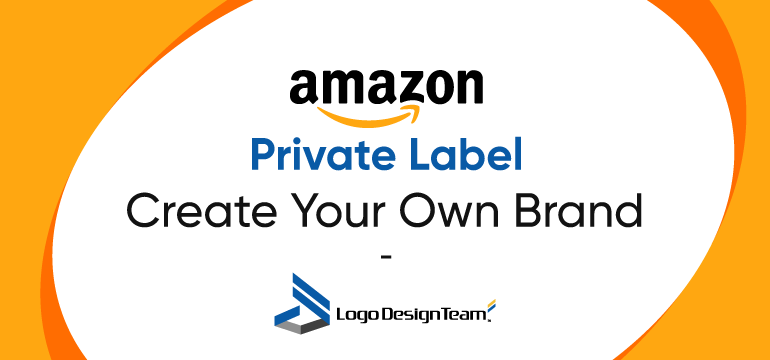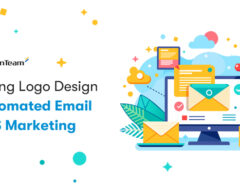If you want to learn all about Amazon private label and creating your own brand, then look no further. You have come to the right place. Before we dive into everything you need to know, let’s cover the basics first. What is Amazon private label? Amazon private label is when you sell existing products under your brand name that you source from a manufacturer. Many large retailers do private labeling as well.
An excellent example of this is “store brand items.” For instance, when you see store brand macaroni and cheese, it’s probably a private label product. The same goes for paper towels, toilet paper, and virtually anything you can think of. If an item at a retailer has its brand label, it’s likely a private label product.
Creating your brand with Amazon private label has many benefits. One great advantage is that you have the option to do all of this without ever touching the products yourself. We will cover this towards the end, so stay with us as we walk you step by step through the private labeling process. More benefits of having a private label are that you can patent, register or copyright your products. This way, nobody can steal your products and sell them (legally). Also, when you have your brand, you are more legitimate in the eyes of the consumer. Perception is everything in business. The better a prospective customer perceives you, the more likely they are to buy.
How to Sell Private Label Products on Amazon
Set-up Account
First, you must set up an Amazon sellers account. Setting up your account is very easy and only takes a few moments. To do this, you will need to go to https://sellercentral.amazon.com/ and click the sign-up button. When you sign up, you should pick the premium plan, which costs $39.99 per month plus fees. You will sign in with your current Amazon account, and if you don’t have one yet, you will create one. We recommend you read through this entire article first before signing up. This way, you know what you are doing. You can then reference this article as you make your way through the Amazon private labeling process.
Choose Products
Before you can begin selling anything, you must learn how to choose your products. To learn more, read here. Choosing the right products to sell can make or break your new business. You want to make sure your products will sell and that you will make a profit when they do. When choosing products, you want to make sure they are of good quality. Nobody wants to get customer complaints and bad reviews. Make sure you check reviews from wherever you decide to source your products from. We will cover product sourcing in a moment.
Create Product Listings
Next, you will create your product’s listing. To do this, you will go to inventory on the top left of your Amazon’s seller’s portal, select add a product and go through the steps that Amazon lays out for you. Now here’s something significant that you should know. As a private label seller, you might need to apply for GTIN exemption. You can find more information about GTIN exemption and how to apply for it under the “About selling a product” section at the bottom left of your screen when you go to add a product. Here you should see “What’s a GTIN.” Right below that, you will see a link that says learn more. Select that to get started.
GTIN approval can take up to 30 days, according to an Amazon representative. Other times your GTIN exemption is approved instantly. If you are approved immediately, you can start listing products after 30 minutes.
Amazon Brand Registry Program
Now that you have listed your products, the next move is to register your brand with Amazon. You can get started by clicking here. As stated previously, not only will having your brand registered with Amazon make you more appealing to potential customers, but it will also help protect your business. Amazon is currently protecting over 350,000 brands, and yours is next. There are numerous benefits when you register your brand.
Some additional benefits to registering are:
Brand Protection- We touched on this but let’s talk numbers to see the bigger picture and why it is necessary. Amazon stopped over 6 Billion, yes 6 Billion suspected bad listing from ever being published. They also stopped 2.5 bad actor accounts from ever posting a single listing. Amazon has a team across the globe that works 24/7 around the clock to respond to potential brand infringements.
Since the brand registry started, there has been a 99% reduction of infringement reported on average. Amazon also offers search tools to be proactive, allowing you to search if anyone on the platform is infringing on your brand. Lastly, Amazon has an automated system that takes your brand’s information and uses it to scan their site for infringement. They recommend you give them as much information about your brand as possible so that their system can protect you better.
A+ Content- Helps your business tell your brand’s story and showcase your product’s features. This can potentially bring more customers to your listing and help increase your sales.
Brand Advertising- If you decide to run ads, which we recommend, you will grow your brand’s awareness. In the beginning, nobody will know you or your new brand. You are one of the millions of sellers on Amazon. Since that’s the case, what do you do? Marketing and advertising are the answer and will be vital to getting off on the right foot. Brand advertising allows you to feature a custom headline, your logo, and up to three of your products in the ad.
Amazon Stores- Amazon will let you promote your products and brand for free with a multipage store.
Amazon Brand Analytics- With brand analytics, you will learn more about your customers with Amazon’s data, which will help you make better strategic decisions for your business.
How To Get Ideas For Your Private Label Products
Getting ideas for your private label products has never been easier! With all the advances in tools and data collection, you could be well on your way to success by utilizing the information given in this section.
Use Amazon Best Sellers Category
Amazon has a best sellers category where they rank the bestselling items in each category. This system has the best sellers ranked, also known as the BSR. Once you get your first sale, you will start receiving your BSR score. When you understand how the system works, you can use it to your advantage. It can show you what products sell best in each category and who sells them. The lower the BSR score, the higher ranked and ultimately better selling that product is in a specific category. For example, a BSR score of 1 means that it’s the number one ranked product in that category.
In contrast, a BSR score of 100,000 means that 99,999 other products in that category are ranked higher. So, to simplify, the lower the BSR score, the better that product is selling. You should know that some products will have more than one BSR score. An item with Multiple BSR scores means it is selling in various categories. The BSR scores are updated hourly. If you hit the ground running with good marketing and advertising, you could quickly climb the ranking ladder.
Another thing to know is that Amazon also takes historical selling data into account when calculating a BSR score. For example, a product from a specific seller could have had 1,000 sales over a few years, but say they’ve only sold 20 products over the last year. In this case, if you have an item in that same category and are selling 20 units a month, you may quickly surpass that seller’s ranking. This way, new hot selling products have a chance to move up the ranking ladder without having to have sold more products overall in that category. Does that make sense?
Use Special Analytical Tools
If you’re using special analytical tools and your competitors are not, then you have the edge over them. These tools can help you with keyword research, reverse ASIN lookup to gather keywords from competitors that are doing well, and much more. AMZScout is just one of the many tools available at your disposal. Utilizing these types of tools will help you learn more and succeed at a faster pace than you usually would without them.
Use Google Trends
Google has roughly 90% of total online search volume. However, Amazon has about 54% of all product search volume, and that number seems to climb as the years continually progress. Especially now that we are amid a pandemic and many people search and order products from home. You might be thinking, how does this relate to me selling on Amazon?
Here’s the answer. You can use Google trends to see how often a product is searched for on Google. Well, that’s just Google and doesn’t relate to Amazon, you say? Wrong! You can cross-reference the competition on Amazon for a specific product and use Google trends to see how often that same product is being searched for on Google. If you notice a product on Google trends is trending upwards, but there’s little competition on Amazon for that exact item, then you may have just found yourself a winning product. Be creative and use everything you can to get ahead with your business.
Sourcing Your Products
Sourcing products doesn’t have to be complicated. You can source items from sites like Alibaba and Aliexpress. These sites have manufacturers in China that you can get thousands of different products from. You can also search domestically for a manufacturer to buy in bulk from at a discounted rate. Many sellers source their products from China because the costs are so low, and they make a nice profit after expenses.
Sourcing products can be much harder to do domestically, depending on where you live. If you were to look for a manufacturer that sells the same products as manufacturers in China, it would cost more than if you live in a country like the United States. However, some products from China are not always of the best quality, and many American consumers might happily pay more for the same product that says Made in the USA. Even if the quality is the same, they might pick the Made in the USA product to support businesses in their home country regardless of price.
You still must negotiate on price and choose a shipping method. These shipping methods and costs associated with them vary. Also, Shipping products from China will take much longer than domestic shipments do. It could take up to a month or even longer when sourcing from China.
Fulfilling Your Orders
Remember at the beginning of this article when I said you have the option to sell private label products on Amazon without ever touching the inventory? Well, this is where the magic happens when you fulfill your orders with Amazon, better known as FBA. With FBA, you have your manufacturer send the products directly to Amazon’s fulfillment center, and they take care of the shipping, returns, and customer service. Still, you must pay the additional fees.
Most FBA sellers sell products that weigh 20lbs or less because of the higher fees associated with oversized heavy items. If you are selling lightweight items, then FBA could be your best option.
On the other hand, if you sell heavy, bulky items, FBM or fulfillment by merchant might be the better choice. As an FBM seller, you are responsible for shipping, returns, and customer service. FBM would be an even better option for selling heavy items if you can work out a deal with your manufacturer to ship them to your customers. You would still be responsible for communicating orders and returns between the manufacturer and yourself. Otherwise, your products will be shipped directly to you, and you handle the rest as an FBM seller.
Final Thoughts
Now that you are equipped with the knowledge on getting started, it’s time to act. Read through this article again as a reference while you set up your Amazon seller’s account and go through the private label process. Don’t forget to consider purchasing a special analytics tool to help you succeed faster. Weigh the pros and cons of order fulfillment as well as where to source your products from. Now hop to it. Time is of the essence. Strike while the ideas fresh in your mind. If millions of other everyday average people can do this, then so can you. Good luck on your journey.




